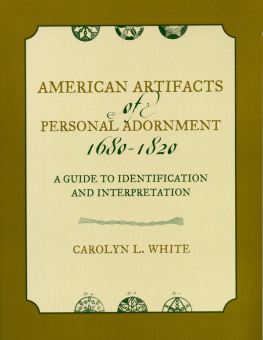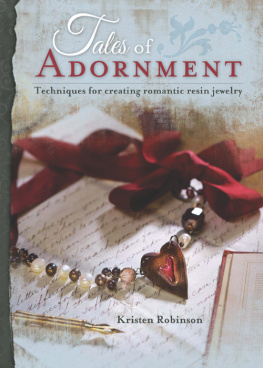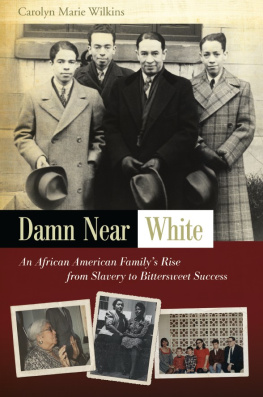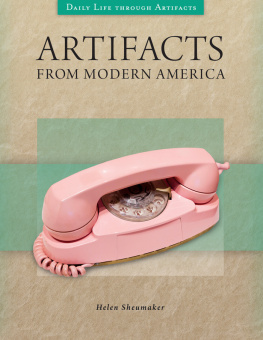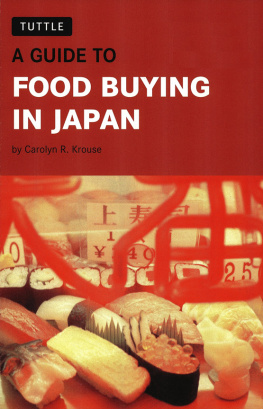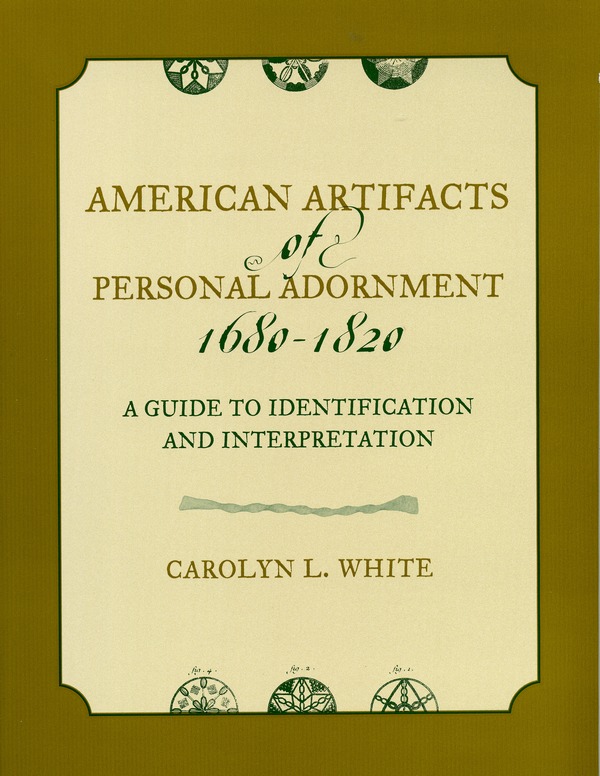Acknowledgments
I NEVER INTENDED TO WRITE THIS BOOK. WHEN I INITIATED my dissertation research, an examination of personal adornment from Portsmouth, New Hampshire, I naively imagined myself comparing the artifact assemblages to published comparative examples from both archaeological and museological contexts. I quickly realized that this picture was pure fancy. In order to accurately identify and interpret the artifacts of personal adornment as I intended, I would have to trace multitudinous research paths. In following the serpentine lines of research for each individual artifact category and pulling them together as one major component of my dissertation, I realized I had created the beginnings of the practical resource I imagined was already out there.
Many people have given me generous support and encouragement throughout the process that culminates in the publication of this book. I am most indebted to my adviser and friend, Mary C. Beaudry, whose scholarship first inspired my original decision to pursue historical archaeology and then drew me to Boston University. Once at BU, Marys support, advice, and high standards fueled my interest in three topics that underlie this volume: material culture, domestic sites, and gender. My intense interest in personal adornment was launched in Marys artifacts seminar, which prompted me to take notice of the gap in the archaeological literature on personal adornment; my seminar project on combs formed the basis of the combs section here. As first reader on my dissertation committee, Marys advice and suggestions on what were essentially the first few drafts of this book shaped both the form and content immeasurably.
I would like to thank my dissertation committee, ably chaired by Julie Hanson, for their support and assistance. As second reader, Clemency C. Cogginss intensive reading and tough questions improved the dissertation and guided the revisions I undertook to make the dissertation into a book. Linda Welters provided information and guidance about costume history and thoughtfully steered me toward those resources that are used by costume historians and away from those that arent. Ricardo Elia provided much encouragement, not only as a member of my dissertation committee but also as a colleague at the Journal of Field Archaeology and a mentor in the classroom. Richard Candees knowledge of all things Portsmouth saved me from several foolish errors and pointed me to many helpful resources.
I owe many debts of gratitude for the funding I received during the course of developing this project. I thank the Department of Archaeology and the Graduate School of Arts and Sciences at Boston University for providing me with a Graduate Student Scholarship and several years of Teaching Fellowships and Continuing Student Fee awards. Three years of funding from the Journal of Field Archaeology, first as a demi-Fellow, then as a Journal Fellow, and finally as Interim Managing Editor, provided support while I developed the ideas for my dissertation and embarked on the research. I especially thank Christine Bedore, Trina Arpin, Marni Blake, Rick Elia, Curtis Runnels, and Al Wesolowsky for their collegiality during this time. I am grateful for the continuing support of the Department of Archaeology in my role as research fellow.
The time that I spent as a McNeil Dissertation Fellow in the Advanced Studies Office at Winterthur Museum made this book possible, and I am indebted to the staff of the museum and library for their individual and institutional roles in making my time so fruitful. I thank the staff of the library and Advanced Studies Office, particularly Gretchen Buggeln for her collegiality and for making all of the fellows feel welcome; Bert Denker for much-needed assistance with photographic resources; Pat Elliot for taking care of everything; Gary Kulik for suggesting research directions that proved useful; Neville Thompson for her incredible knowledge of the incredible resources; Jeanne Solensky for her good humor and great help fetching item after item in the Downs Collection and fulfilling the ensuing image requests; and Margaret Welch for her aid, enthusiasm, and great hospitality. I thank Dot Wiggins and Susan Newton for their assistance in procuring images for this publication. I am also grateful to my fellow Fellows in residence at Foulsham HouseTom Denenberg, Eunyoung Cho, Scott Casper, Liz Seigel, Anna Andrzejewski, and Matt Halefor providing excellent camaraderie and making the experience both intellectually stimulating and pleasant. Margaret Ponsonby remains a true friend.
I am grateful for the support from Strawbery Banke Museum that took so many shapes. Martha E. Pinello created a supportive and enjoyable environment for productive archaeological work; I am thankful for the space, access, and assistance she established for this project on both a personal and institutional level. Sandra DeChard provided fellowship and help during many research trips to Portsmouth. I thank Jessica Desany and Rebecca Hatch McKernan for their friendship and affability during our shared time in Portsmouth and in the ensuing years. I thank Carolyn Roy for her willingness to track down certain artifacts whenever I needed them. I extend my gratitude to Mary Dupr, Carl Crossman, John Maier, Kathy Mullins, Tony Booth, Bob Barth, Sally Stradzins, Phyllis Crosby, and Howard Crosby for their assistance, encouragement, and good humor. I am grateful for the research conducted by other archaeologists at the Portsmouth sites: Aileen B. Agnew, Helen Chase, Bruce Follansbee, Gray Graffam, Faith Harrington, Scott LaPointe, Rick Morris, Steven Pendery, and Kathleen Wheeler.
I have been the beneficiary of assistance from a host of helpful archivists and librarians at many different locations. Id like to thank the staffs at the New Hampshire Historical Society, Concord, New Hampshire, and David Molen in particular; Portsmouth Athenaeum, Portsmouth, New Hampshire; Massachusetts Historical Society, Boston, Massachusetts; Society for the Preservation of New England Antiquities, Boston, Massachusetts; National Gallery of Art, Washington, D.C.; Worcester Art Museum, Worcester, Massachusetts; High Museum of Art, Atlanta, Georgia; The Henry E. Huntington Library and Art Gallery, San Marino, California; Victoria and Albert Museum, London, England; Mugar Memorial Library, Boston, Massachusetts; Albright-Knox Art Gallery, Buffalo, New York, New York; Metropolitan Museum of Art, New York, New York; Wadsworth Athenaeum, Hartford, Connecticut; Old Salem, Winston-Salem, North Carolina; Museum of Fine Arts, Boston, Massachusetts; Peabody Essex Museum, Salem, Massachusetts; Litchfield Historical Society, Litchfield, Connecticut; Museum of the City of New York, New York, New York; Abby Aldrich Rockefeller Folk Art Center, Williamsburg, Virginia.
I owe thanks to Paula Richter, who provided me with an internship at the Peabody-Essex Museum early in my graduate career during which I became interested in costume history. I appreciate the help, patience, and advice on photographing small artifacts provided by Michael Hamilton.
I have also benefited in countless ways from the trusted friendship of Michele Clark, Emily Craig, David Craig, Jeremy Crean, Gillian Epstein, Jessica Goldberg, Dan Goldy, Ziyad Hopkins, Peter Kalb, Laura Lee, Ann-Eliza Lewis, Akin Ogundirun, Tim Scarlett, Joanna Pi-Sunyer, and David Seidenberg. I am grateful to Shannon Plank for her role as colleague and friend, beginning from day one of our graduate careers.
I am lucky to have such assuring and wonderful parents, Rosie and Bill White, and I thank them for their interest in the book and their enthusiasm in the appropriate places along the way. Thanks also to my sister, Kate White, who has been a steady friend, asking about the books progress and listening to my responses. I am also grateful to my in-laws, Rich and Ronnie Seidenberg, for their help and encouragement.

